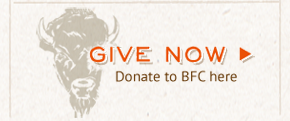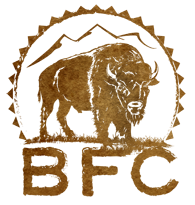What is missing from the Custer Gallatin National Forest's desired conditions, goal, objectives, guidelines, monitoring questions, and indicators for American bison in the next forest plan?
Standards.
Without standards, there is no force compelling the Custer Gallatin National Forest to reach a desired condition (a direction that frames the purpose and need of projects to come), accomplish a goal (a statement of intent) or objective (a statement measuring progress toward a condition). Guidelines are too slippery.
These special terms are found in chapter 1.4.1 Plan Components in the Draft Revised Forest Plan, pages 4-6, on our web site: www.buffalofieldcampaign.org/species-of-conservation-concern
I too desire a condition where American bison reach a year-round self-sustaining population on the National Forest. But my wishes are not enough. There must be something more, and that something more is a standard (a mandatory constraint) on forest decisions.
We strongly encourage you to write comments asking the Custer Gallatin National Forest to adopt standards. Here's a sample of comments on standards from our May 1 draft:
* The best available scientific information supports strengthening alternative D with strong enforceable standards for American bison, bighorn sheep, and threatened grizzly bears.
* Conserving American bison viability and diversity should be a forest wide standard.
* Freedom for American bison to roam National Forest habitat should be a forest wide standard.
* Connectivity to habitat for American bison should be a forest wide standard.
* To restore connectivity, and conserve viability and diversity of American bison's genetically distinct subpopulations, the Custer Gallatin National Forest needs to adopt a standard to close and not permit cattle grazing allotments within American bison range.
* To restore connectivity, and conserve viability and diversity of native bighorn sheep populations, the Custer Gallatin National Forest needs to adopt a standard to close and not permit domestic sheep grazing allotments within bighorn sheep range.
* The best available scientific information supports including enforceable standards to protect key linkage areas, connectivity to habitat, and food security for threatened grizzly bears.
* The Custer Gallatin National Forest must adopt a forest wide standard for all grazing permits requiring "let-down" fencing and remove barriers that impede migration of native species.
* Restore more wetlands, creek banks, and pond edges through strong standards and more yearly projects to benefit American bison and native species diversity.
* The Custer Gallatin National Forest has a duty to fulfill its responsibilities and trust obligations safeguarding treaty rights, sacred species, sacred sites, and traditional cultural places of significance to aboriginal people.
In providing a reason, rationale, and evidence in support of your comment, it becomes "substantive," and much harder for the Custer Gallatin National Forest to ignore.
A substantive comment is more likely to effect Forest Supervisor Mary C. Erickson's final decision.
Nitsíniiyi'tak, Pidamaya, Thank you.
Darrell Geist, habitat coordinator
Buffalo Field Campaign







